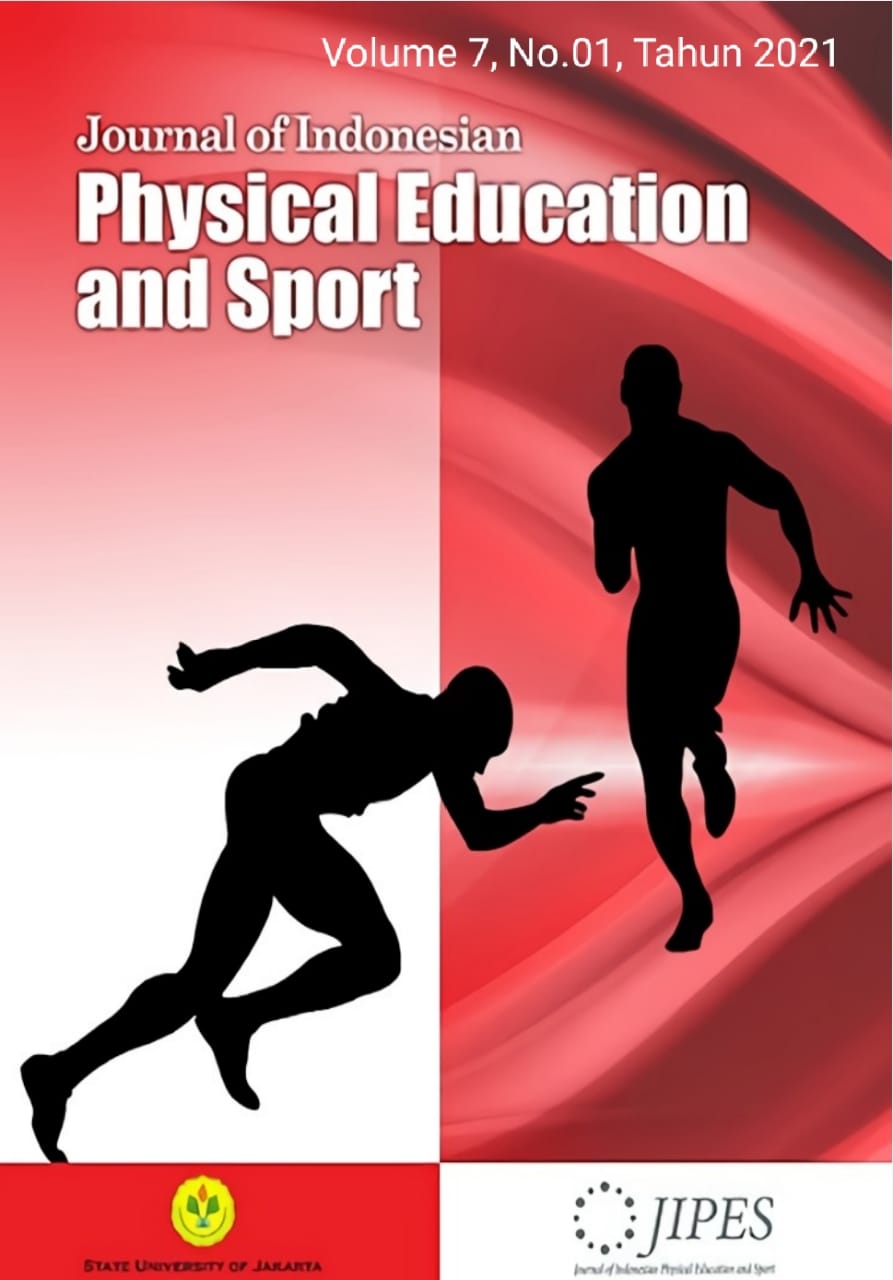COMPARISON OF PHYSICAL FITNESS LEVEL OF DAY AND BOARDING SCHOOL STUDENTS IN OFFA, OFFA L.G.A.
Keywords:
Key Words: Muscular, Strength, Flexibility, FitnessAbstract
Health is a state of complete physical, mental, and social well-being and not merely the absence of disease or infirmity. The study compared the physical characteristics and fitness levels of day and boarding students in Offa Local Government Area, Kwara State. The population for this study comprised 210 students in day and boarding schools in Offa LGA. Systematic sampling technique was used to select 20 students each from day and boarding school. Ex-post facto research design was adopted for the study, Standardized instrument (stadiometer, body fat/hydration monitoring scale, measuring non-elastic tape, stop watch, whistle, floor mat, sit and reach box) were used for the study. Split half method was used to ascertain the reliability of the instrument and a correlation coefficient of 0.63r was obtained. Descriptive statistics of mean and standard deviation and inferential statistic of t-test were used to analyse the data . It findings revealed that boarding students were taller than the day students while both groups were physically fit and healthy. Furthermore, day and boarding students were significantly different in their cardio-respiratory endurance while both were not significantly different in muscular strength and body flexibility. It was therefore recommended that there should be a regular physical fitness assessment and screening consideration for students in day and boarding schools for early detection of any deviation from normalcy to take immediate corrective action while the school should organise physical fitness programme for all students on regular basis to develop their cardio respiratory endurance, muscular strength and body flexibility.
Key Words: Muscular, Strength, Flexibility, Fitness
References
Ashwell, H., & Hsieh, S.D. (2005). Six reason why the waist-to-height ratio is a rapid and effective global indicator for health risks of obesity and how its use could simplify the international public health message on obesity. International Journal for Food Science and Nutrition; 56 (5): 303-307.
Bakinde, S.T., Olaitan, O.L., Ajayi-Vincent, 0.B., & Ibrahim, T.O. (2013). Physical Characteristics and Fitness Level of Secondary School Students in Kwara State, Nigeria. Journal of Emerging Trends in Educational Research and Policy Studies (JETERAPS) 4(5) 766-770.
Bakinde, S.T., Olaitan O.L., Oyetunji B.A., & Bakinde I.J. (2016). Health-Related Predictors of Sport Performance among Athletes in University of Ilorin, Kwara State. llorin Journal of Education; 35(1) 172 — 182.
Corbin, C.B., Linsey, R., Welk, G.L. & Corbin, W.R (2002). Concept of fitness and wellness. (4th Ed). Chicago: McGraw-Hill Companies. Incorporation.
Debbie, V. (2011). Dealing with weight concerns adolescents and physical activity (3rd ed.).Cambridge: Oxford University presS. 92-98.
DeLorenzo, A., Bianchi, A., Maroni, P., Iannarelli, A., Di Daniele, N., Iacopino, L., & Di Renzo, L. (2013). Adiposity rather than BMI determines metabolic risk. International Journal of Cardiology; 166(1): 111-117.
Dipayan, C., Soma, C., & Vasant, A.K. (2002). Physical Fitness: A Comparative Study between Students of Residential (Sainik) and Non-residential Schools (Aged 12-14 Years). Indian Journal of Physiology Pharmacology; 46 (3): 328-332.
Hoek HW (2006). Incidence, prevalence and mortality of anorexia nervosa and other eating disorders complications of adolescents anthropometry 19 (4) 389-403.
Insel P.M. & Roth W.T. (2002). Fit and Well. Alternate edition (4th Ed) Dubuque. McGraw Hill.
Kurt, C., Catokkas, F., & Atalog, 0. (2011). Body proportions of Turkish physical education and sports students, 6th FIEF European Congress, 287-291
Lafinhan, K., & Olaitan O.L. (2005). Comparing the Physical fitness and sport performance in Handball among Kwara State under 15 players and nonplayers. African Journal of Educational. Studies; 3(2): 411-420.
Mohammed, I.A. (2014). Assessment of Physical Fitness Status of Public and Private Secondary School Students in Katsina State. Unpublished dissertation, Ahmadu Bello University, Zaria
Musa, A.I., Ismaila, S.O., Adejuyigbe, Akinyemi, 0.D., & Abolarin, M.S. (2012). Comparison of biomechanical and anthropometrical data of Nigeria tertiary institution students with some selected countries. Management Science Letter, 2(6):1885-1894.
Odebiyi, D.O., Tella B.A., & Oginni, D.O. (2013) Comparison of Physical Fitness Level of Private and Public Secondary School Students in a Nigerian Population: A Preliminary Study. Journal of Basic Medical Sciences; 1(1): 11-15
Olaitan, O.L. (2005). The role of physical fitness in the prevention of chronic diseases. Journal of Physical Education and Research; 10(1): 1060-1064.
Pramanik T. & Pramanik S., (2001). Physical fitness status among the students of a medical college in Kathmandu, Nepal. Eastern Mediteranean Health Journal. 7(4), 658-661.
Ruiz, J.R., Castro-Pinero, J., Artero, E.G., Ortega, F.B., Sjostrom, M., Suni, J., & Castillo M. J., (2009). Predictive validity of health-related fitness in youth: a systematic review. British Journal of Sports Medicine; 43(12): 909-923.
Ruiz, J.R., Ortega, F.B., Gutierrez, A., Meuse', D., Sjostrom, M., & Castillo, M.J. (2006). Health-related fitness assessment in childhood and adolescence: a European approach based on the AVENA, EYHS and HELENA studies. Journal of Public Health; 14(5): 269-277.
Zaccagni, L., Barbieri, D., & Gualdi-Russo, L. (2013). Body composition and physical activity in Italian university students. Journal of Translational Medicine; 12(1): 120¬-131.










 </a > a
</a > a 